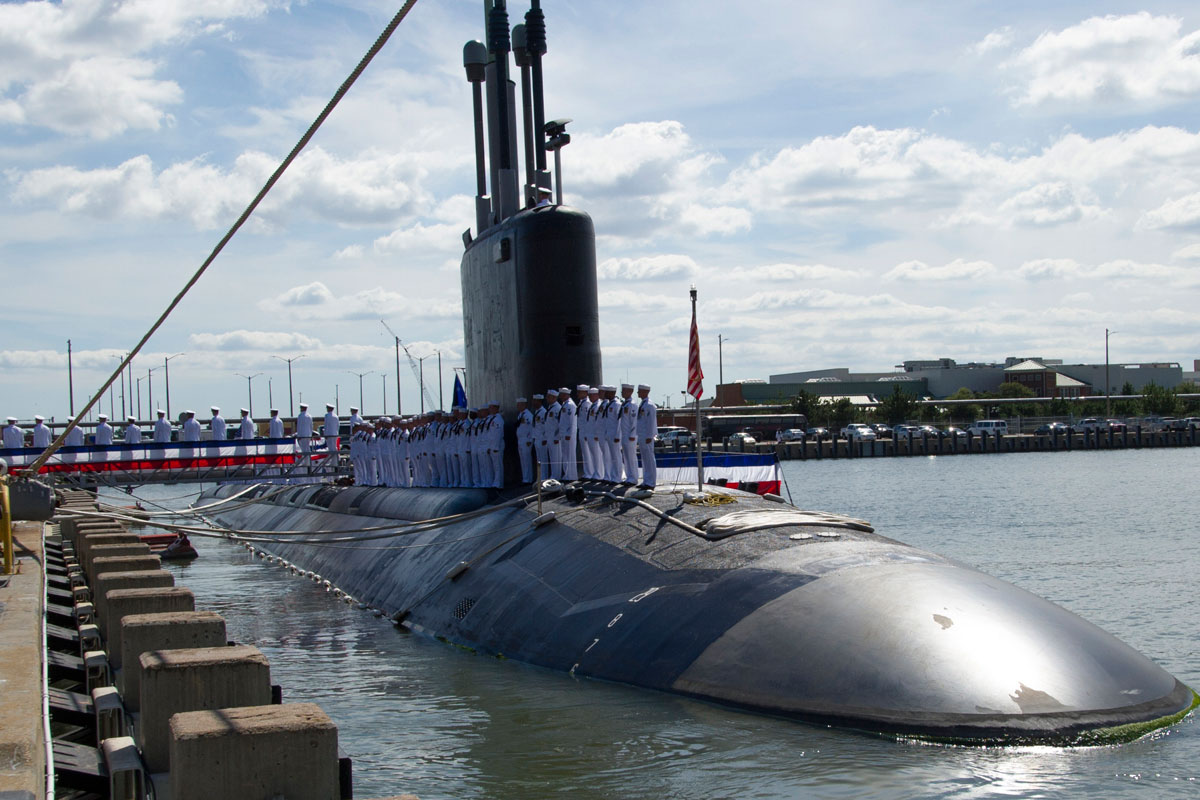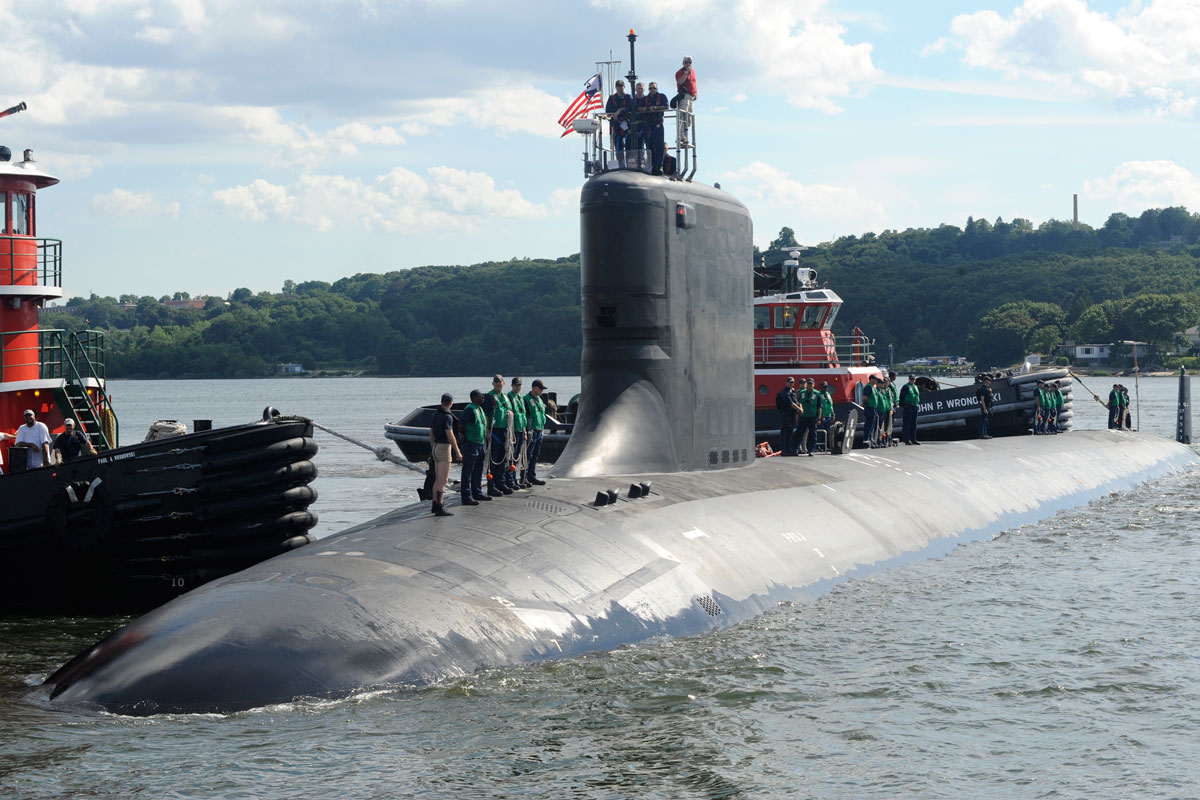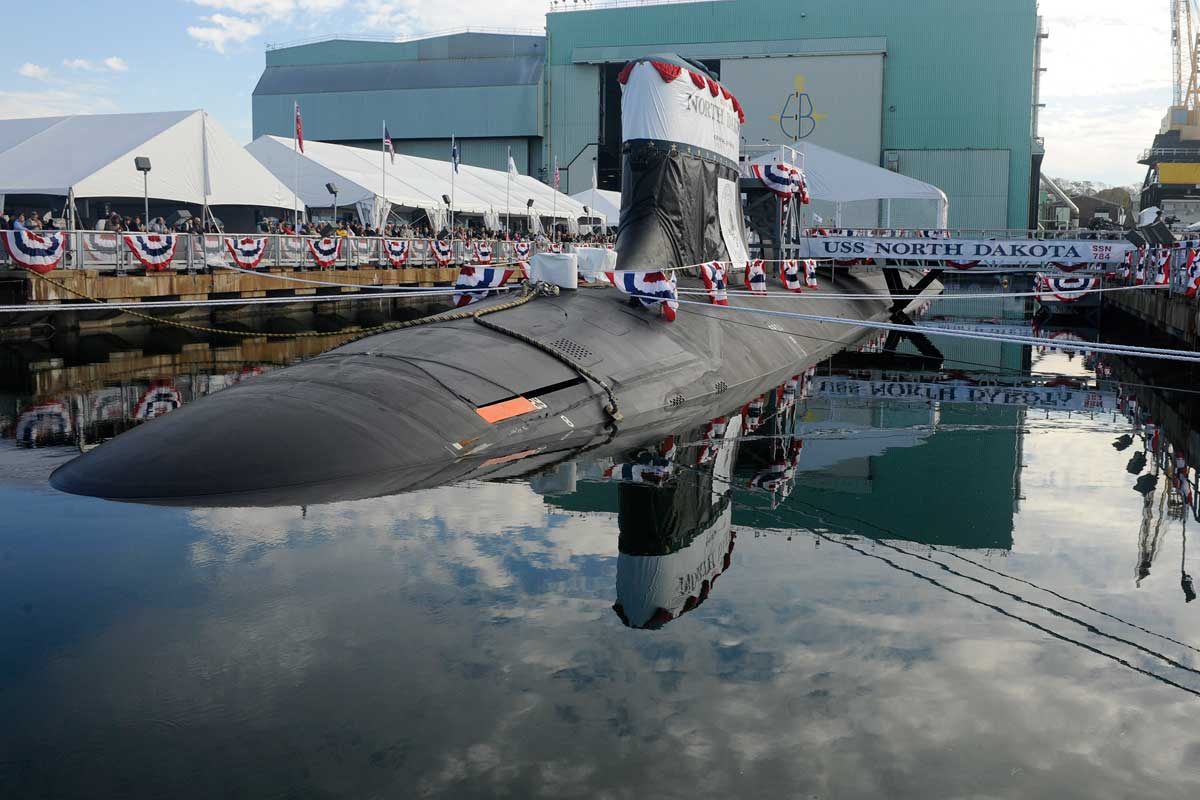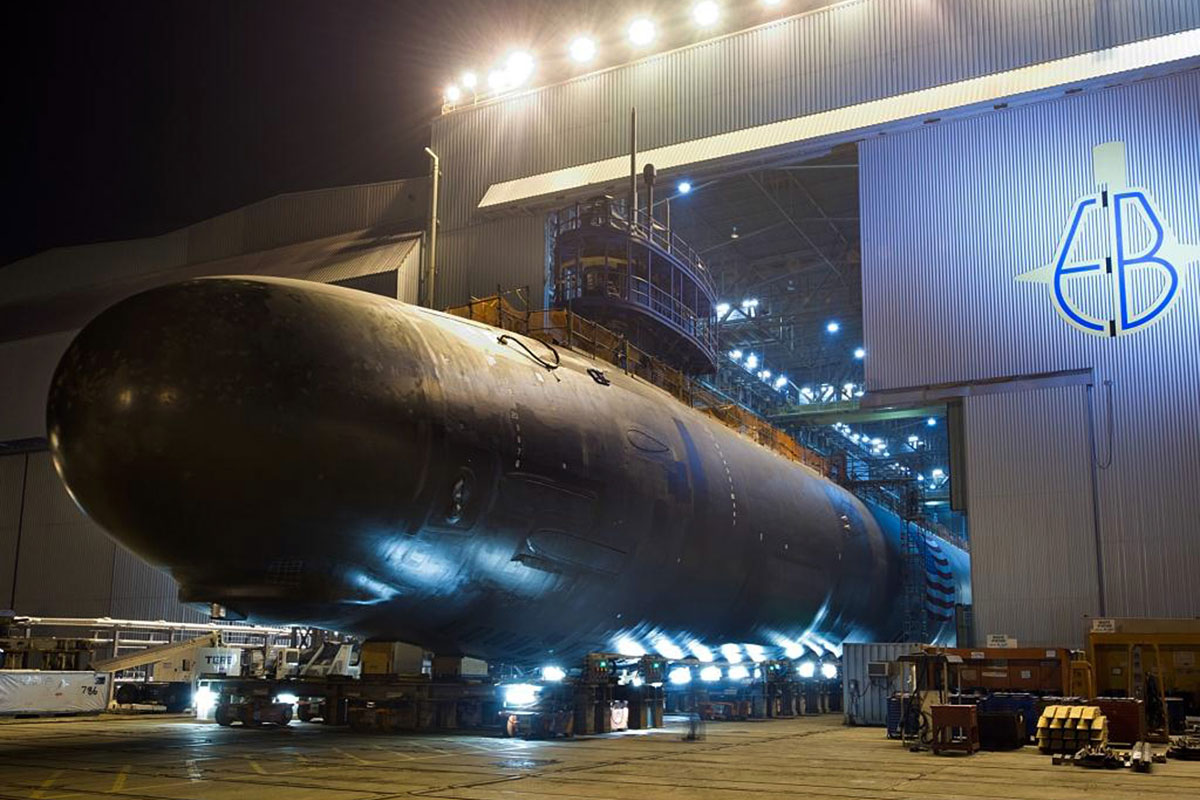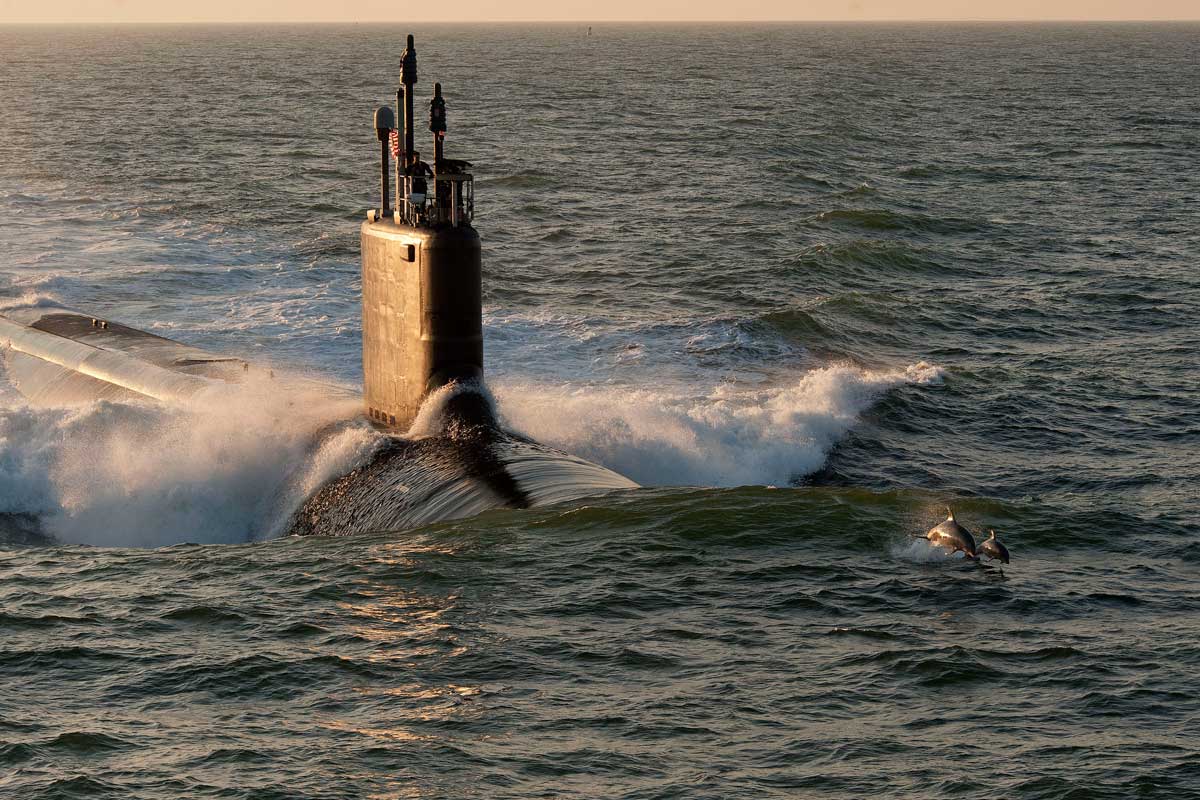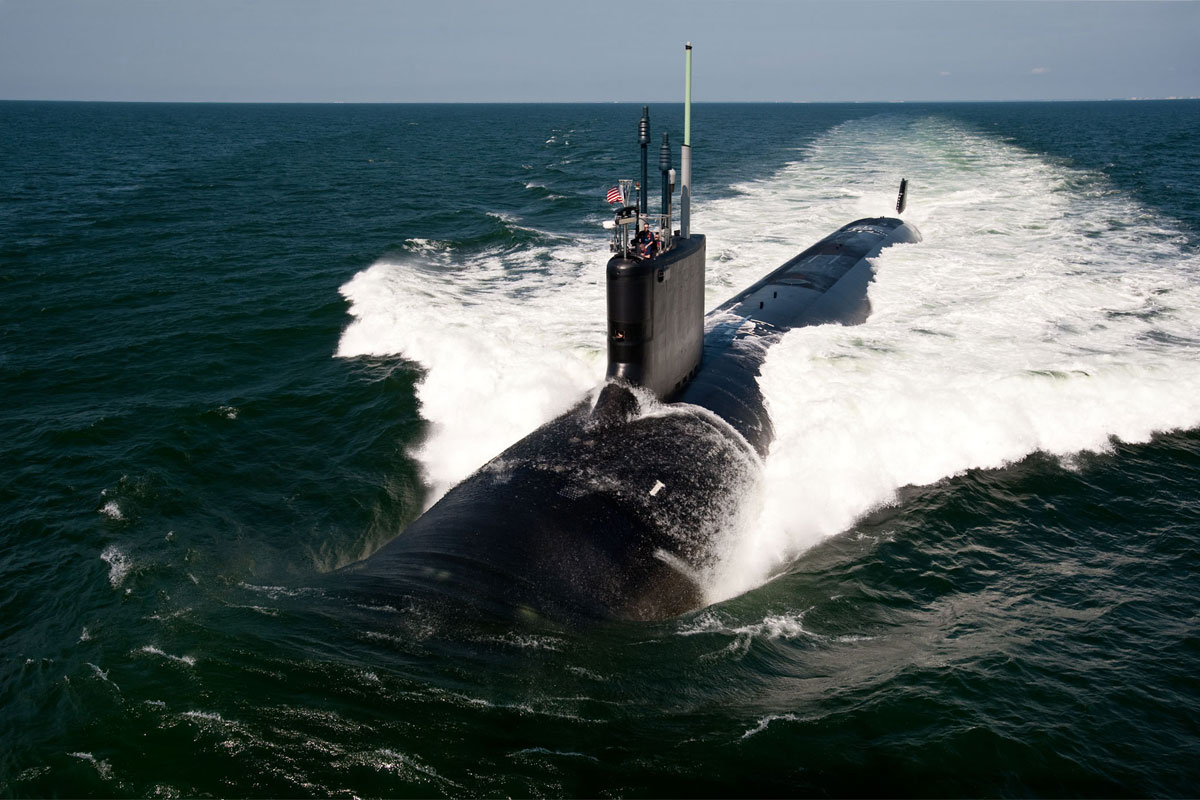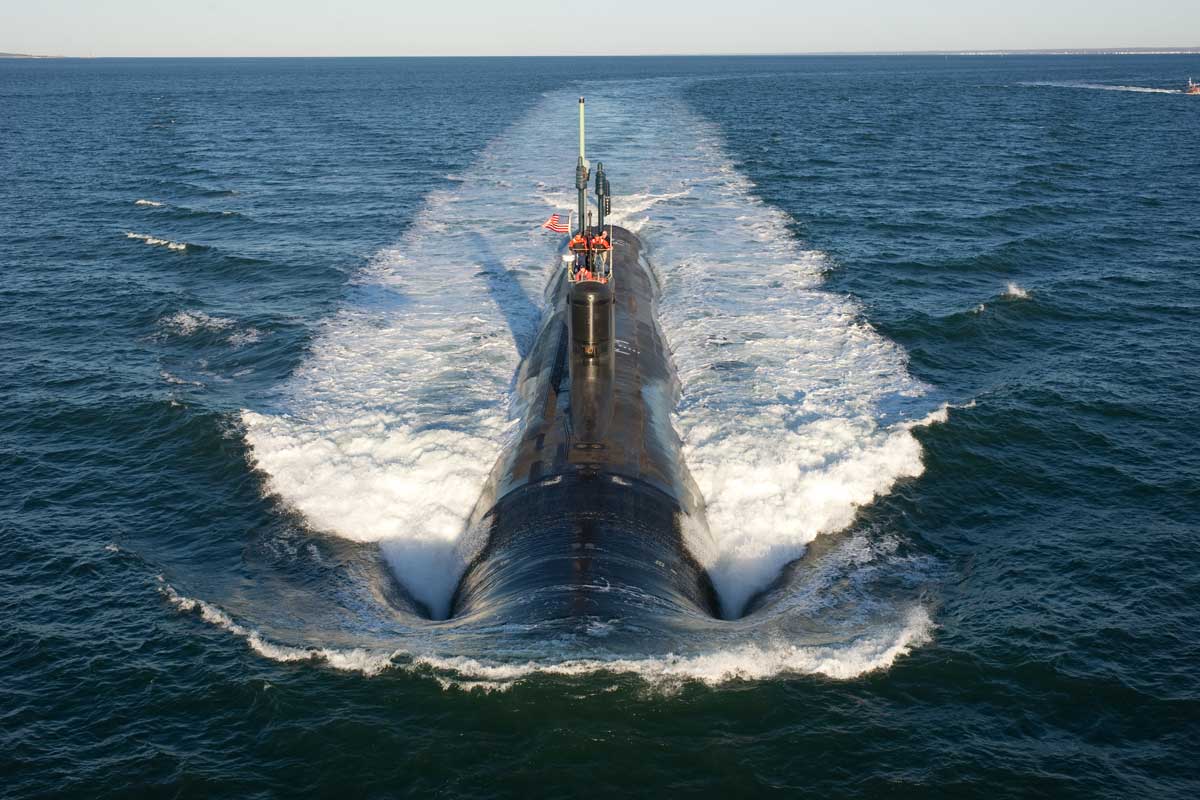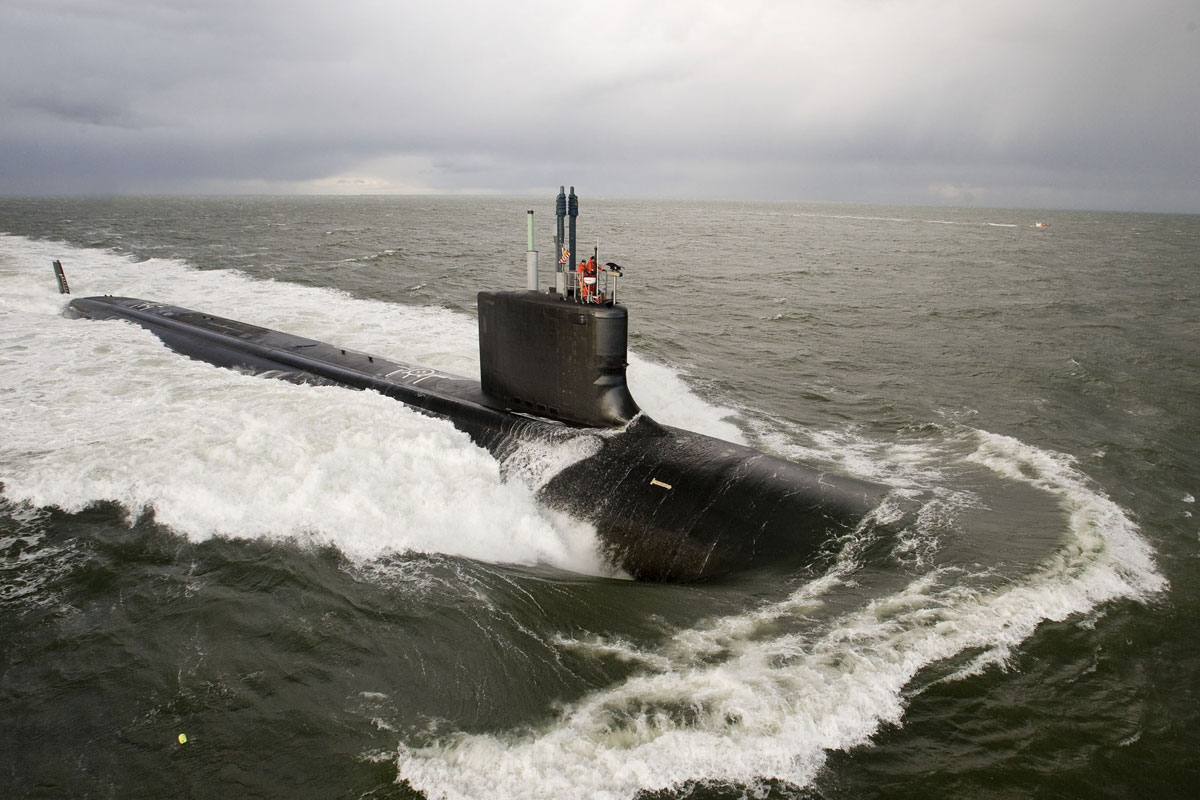Manufacturer: General Dynamics Electric Boat Division and Huntington Ingalls Industries Inc. - Newport News Shipbuilding.
Service: USN
Armament: Tomahawk missiles, twelve VLS tubes, MK48 ADCAP torpedoes, four torpedo tubes
Propulsion: One nuclear reactor, one shaft
Speed: 25+ knots
Crew: 15 officers; 117 enlisted
The Virginia Class attack submarine is the U.S. Navy’s newest undersea warfare platform and incorporates the latest in stealth, intelligence gathering and weapons systems technology. Attack submarines are designed to seek and destroy enemy submarines and surface ships; project power ashore with Tomahawk cruise missiles and Special Operation Forces; carry out Intelligence, Surveillance, and Reconnaissance (ISR) missions; support battle group operations; and engage in mine warfare.
The Virginia class was not the first new design to come into service after the Cold War. The Seawolf class was originally intended to succeed the Los Angeles class, but production was canceled after only three submarines were produced. This restriction occurred due to budgeting restraints at the end of the Cold War, and the final submarine was manufactured in 1995. At a cost of $3 billion per unit, the Seawolf class was the most expensive SSN submarine. The Virginia class was put into production in full swing due to being smaller and carrying more manageable costs than the Seawolf.
The Navy is now building the next-generation attack submarine, the Virginia (SSN 774) class. The Virginia class has several innovations that significantly enhance its warfighting capabilities with an emphasis on littoral operations. Virginia class SSNs have a fly-by-wire ship control system that provides improved shallow-water ship handling. The class has special features to support special operation forces including a reconfigurable torpedo room which can accommodate a large number of special operation forces and all their equipment for prolonged deployments and future off-board payloads.
The class also has a large lock-in/lock-out chamber for divers. In Virginia-class SSNs, traditional periscopes have been supplanted by two photonics masts that host visible and infrared digital cameras atop telescoping arms. With the removal of the barrel periscopes, the ship’s control room has been moved down one deck and away from the hull’s curvature, affording it more room and an improved layout that provides the commanding officer with enhanced situational awareness. Additionally, through the extensive use of modular construction, open architecture, and commercial off-the-shelf components, the Virginia class is designed to remain state of the practice for its entire operational life through the rapid introduction of new systems and payloads.
As part of the Virginia-class’ third, or Block III, contract, the Navy redesigned approximately 20 percent of the ship to reduce their acquisition costs. Most of the changes are found in the bow where the traditional, air-backed sonar sphere has been replaced with a water-backed Large Aperture Bow (LAB) array which reduces acquisition and life-cycle costs while providing enhanced passive detection capabilities. The new bow also replaces the 12 individual Vertical Launch System (VLS) tubes with two 87-inch Virginia Payload Tubes (VPTs), each capable of launching six Tomahawk cruise missiles. The VPTs simplify construction, reduce acquisition costs, and provide for more payload flexibility than the smaller VLS tubes due to their added volume.
Ships in the class:
USS Virginia (SSN 774), Portsmouth, NH
USS Texas (SSN 775), Pearl Harbor, HI
USS Hawaii (SSN 776), Pearl Harbor, HI
USS North Carolina (SSN 777), Pearl Harbor, HI
USS New Hampshire (SSN 778), Groton, CT
USS New Mexico (SSN 779), Groton, CT
USS Missouri (SSN 780), Groton, CT
USS California (SSN 781), Groton, CT
USS Mississippi (SSN 782), Groton, CT
USSMinnesota (SSN 783), Norfolk, VA
North Dakota (SSN 784), No homeport - Construction began March 2009. Christened 2 November 2013.
John Warner (SSN 785), No homeport - Construction began March 2010
Illinois (SSN 786) - Construction began in March 2011.
Washington (SSN 787) - No homeport, construction began in September 2011
Colorado (SSN 788) - No homeport, construction began in March 2012.
Indiana (SSN 789) - No homeport, construction began September 2012.
South Dakota (SSN 790) - Under contract.
Delaware (SSN 791) - Under contract.
